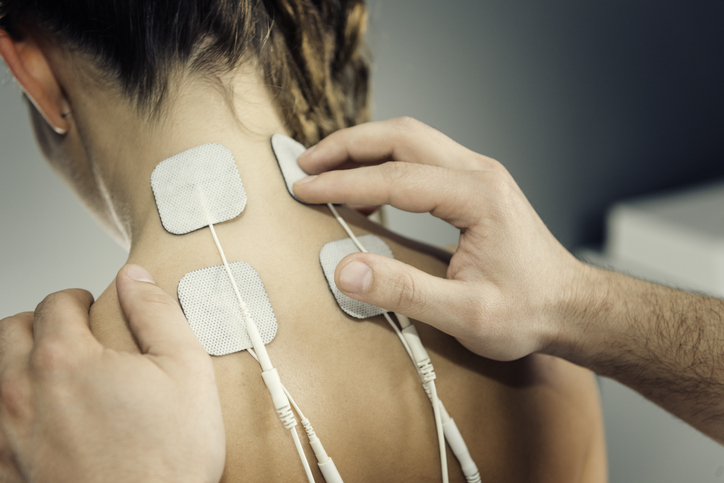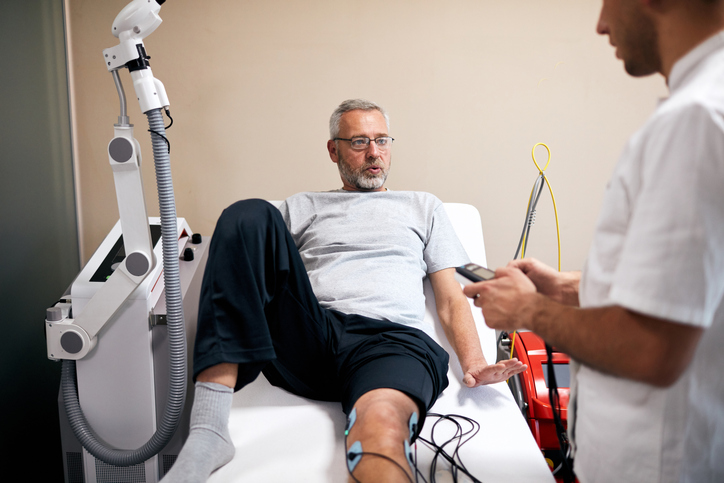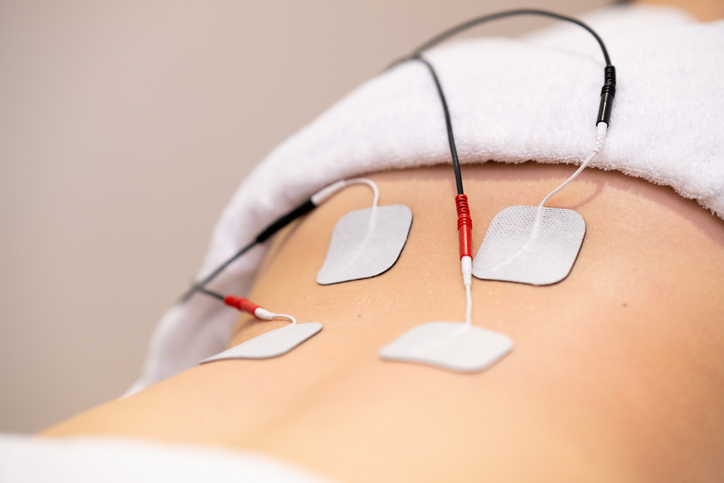Treatments
Overview of Transcutaneous Electric Nerve Stimulation (TENS)

What is transcutaneous electric nerve stimulation (TENS)?
Transcutaneous electric nerve stimulation (TENS) is a non-invasive pain-reduction therapy that involves using a portable device (TENS unit) that applies slight electrical pulses on painful areas of the body. These electrical pulses flood the nervous system, reducing its ability to transmit pain signals from the spinal cord to the brain. The electrical pulses also cause the body to produce natural pain relievers called endorphins. Transcutaneous electric nerve stimulation can be used as a therapy for various pain conditions including, but not limited to, the following:
- Bursitis
- Arthritis
- Tendinitis
- Headaches
- Neck pain
- Labor pain
- Post-operative pain
What is a TENS unit?
A TENS unit is approximately the size of a large smart-phone. The device contains wires that lead to electrodes which attach to the skin via sticky pads. These electrodes deliver low-voltage (10 Hz to 50 Hz) electrical pulses to the painful area. The electrical pulses stimulate the nerve fibers in the area and reduce the pain signals being sent to the brain. A TENS unit is equipped with controls that can alter the intensity, frequency and duration of the electrical pulses, making it an adaptable therapy that can easily be individualized for pain reduction.
What are the advantages of TENS therapy?
TENS therapy has no major side effects and, in many cases, significant pain reduction has been achieved with just a few treatments. Depending on the specific pain condition and pain levels, success rates vary. A considerable advantage of a TENS unit is its portability; TENS therapy can be administered in a clinical setting or at home.


















